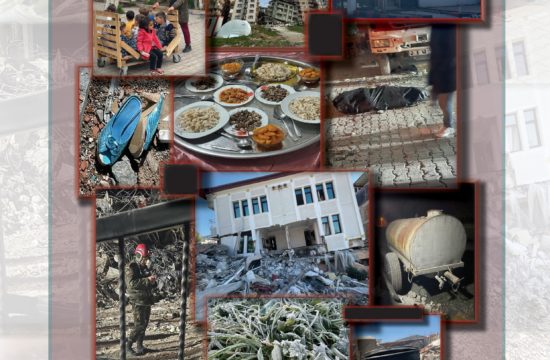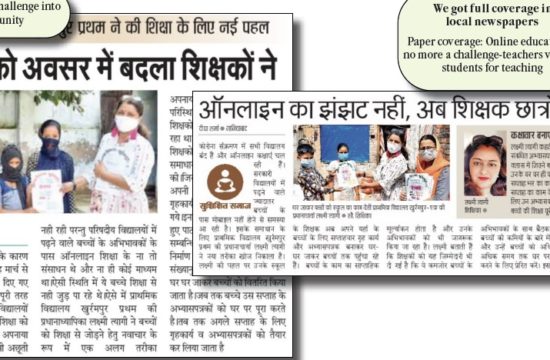Erkan Aydoğanoğlu
Turkish education Union EĞİTİM-SEN
Turkey has been located in the most active seismic zones in the world for centuries and ranks first in the world in terms of seismic risk. Turkey is located in a geography that has suffered from many destructive earthquakes in the past. After each earthquake, tens of thousands of people paid with their lives for not having taken the necessary precautions and for repeating the mistakes of the past.
The earthquake catastrophe not only destroyed the buildings, but also the country’s governing regime, economy and urbanization policies, which go against nature and science and are totally based on rent. It was clearly proven that the main reason for such a large-scale destruction was the way of understanding central and local governance, which adopts rent-based policies that give priority to the needs of capital and not to the safety of life and property of the population.
The disaster caused by the earthquake of February 6, 2023 caused great destruction
in 11 provinces and, according to official numbers, more than 50 thousand victims. The
disaster, involving a large region inhabited by about 14 million people and resulting
in severe destruction, caused all citizens, especially those living in the cities directly
affected by the earthquake, to face immeasurable suffering.
Scientists claim that the risk of natural disasters in countries located in the seismic zone is five times higher in comparison with other countries. In terms of the probability of disasters and the average annual number of disasters in the world, the United States takes the first place, followed by Mexico, Japan and Turkey.
The level of development of societies and their readiness for disasters determines whether or not natural catastrophes become disasters. It is possible to prevent natural disasters from becoming catastrophes in countries that take the necessary precautions and prepare against the risk of earthquakes. For example, in Japan, which is a country much more exposed to seismic risk than Turkey, catastrophes do not occur even in large-scale earthquakes, as they have been taking measures for many years focusing on human life.
Education System Buried Under Rubble
In the earthquake zone, most of the students and teachers were injured and there was loss of life and property. As a result of the earthquakes, not only the buildings but also the educational system remained mostly under the rubble. State institutions did not react quickly and sufficiently to the earthquake, but thanks to the intensive efforts of public and non-governmental organizations, search and rescue operations were carried out.
Nearly 4 million students are being educated in 12,550 schools in the earthquake zone, while the number of teachers working in public schools alone is 210,000. The earthquake zone is home to 21% of all the 56,259 educational institutions affiliated to the Ministry of National Education, 21.4% of all the students and 19.1% of the teachers in the 11 earthquake-affected provinces. According to official data, 555,938 pupils/students receive formal and non-formal education and accommodation services in the 5024 private educational institutions in the earthquake- affected provinces. Approximately 380,000 students and 45,000 academic and administrative personnel continue their education and training activities in 16 universities in the earthquake zone.
31,307 schools were built before the anti- earthquake regulations which entered into force in 2007. Between 2011 and 2022, only 5,000 schools (16%) were tested for earthquake resistance and 1,500 schools were demolished because they were not earthquake resistant. The number of readapted schools is only 2 thousand. According to the earthquake report prepared by the Chamber of Geological Engineers, 4,159 schools in Turkey are located in high-risk areas on fault lines. Schools located in high seismic risk zones should be relocated urgently.
While the migration of citizens, students and education workers from the earthquake zone to other cities has begun, the gradual transition to education in the earthquake zone has started. However, as attendance is not compulsory, only a third of the students are attending school. Students in the earthquake zone require both intensive psychosocial support and appropriate study environments. In addition to providing appropriate study environments, counseling activities are being carried out for the students.
In the cities where the earthquake caused extensive damage, there are ongoing problems in providing basic needs for citizens living in the city center and rural areas, such as clean water, safe food, shelter, heating, clothing, electricity and communications, as the impacts of the seismic catastrophe are expected to last for a long period of time. With the limited housing conditions available, students do not have the opportunity to study, which negatively affects education not only in school but also outside of school.
Distance Education is
not the Solution
Shortly after the earthquake catastrophe, the government declared the implementation of distance education in all universities across the country under the argument that earthquake victims would be accommodated in university dormitories. Due to this decision, most of the current fourth year university students in Turkey were only able to spend half of their university life with face-to-face education due to the pandemic and the earthquake.
Distance education at universities has none of the qualities of face-to-face education and gives the impression that education is being provided just for the sake of doing it. The decision to introduce distance education at a time when students were most in need of solidarity, socialization and greater contact with each other opened the way for even greater negative consequences.
In Turkey, many students lack technical equipment such as computers, Internet, etc.
Problems also arise with electricity and Internet access, especially in earthquake- affected areas. Courses, especially those of an applied nature (engineering, medicine, etc.), cannot be taught remotely, and students cannot communicate with each other or with the teacher, so a real learning process cannot take place. Also, most of the students outside the earthquake zone (students in rural areas) have problems with Internet access, expenses and technological infrastructure (telephone, computer, etc.). On the other hand, the digital infrastructure of many universities is not adequate for distance education.
Universities are, in addition to education and training, spaces where dynamic socialization is developed and solidarity is reinforced. It is a great injustice to this generation to once again keep students out of education who had already been excluded from it during the pandemic.
Conclusion:
Despite the time elapsed, there are still problems regarding the condition of schools, which are the most fundamental and necessary elements for the survival of education in the earthquake zone, and the housing of students and education workers. Considering the great destruction and damage caused by the earthquake, there is still no concrete planning about how teachers and students without homes will be able to continue their lives and how the problem of access to education will be solved.
A period of disruption to the educational process will inevitably have an impact on all educational life. While measures are being taken to maintain education in healthy and safe environments in the earthquake zone, it is necessary to create study and practice environments for students, coordinate these environments by professionals, and monitor earthquake-affected students.
Cities destroyed by the earthquake can be rebuilt, destroyed buildings can be reconstructed, but clearly money alone will not be enough to restore hope to the people. While money is an important tool, the people of the region need to feel more of the sense of humanity that gives meaning to human existence. The primary way to achieve this is to take steps to accelerate the generation of permanent solutions to the problems experienced in all areas of social life, especially in education, by ensuring the direct participation of the population and trade unions in decision-making processes.











